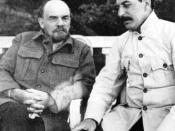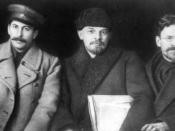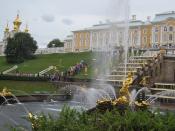When a government becomes so desperate that it denies the people their God given rights and does not provide them with the necessities to live, the result will most likely be rebellion. Such was the case in Russia during the early 1900s. With their leader, Czar Nicholas II, not meeting their needs, the people of Russia began rebelling, thus, leaving an open window for Lenin and the Bolsheviks to take power as a Communist party that would later become a totalitary dictatorship.
In the mid 1800s, Karl Marx, a German philosopher, founded communism, and wrote a book on what it was. Many Russian men read the book and set up little Communist groups throughout Russia. By the late 1800s, a man named Vladimir Lenin adopted the ideas of communism and began to make it popular in Russia.
In the early 1900s, Russia was ruled by a dictatorship led by Czar Nicholas II.
Governing Russia badly, Czar Nicholas II left the proletariats (the working class) very poor (2). When the proletariats decided that they needed representation in the government, they began to revolt in what is now known as the Revolution of 1905. To fix the problem of no representation, the Duma was created. Although the Duma was there to help the government make decisions, the czar saw no point in it and constantly dismissed it (1).
Since the Duma was never listen to, the czar still had total power, and got Russia involved in World War I, when the country could not afford it (2). By 1917, the proletariats began to reach the point where they could not take it any more. This was the beginning of a whole mass of revolutions that would eventually force Czar Nicholas II to abdicate.
During these revolts, Lenin began spreading communism...


